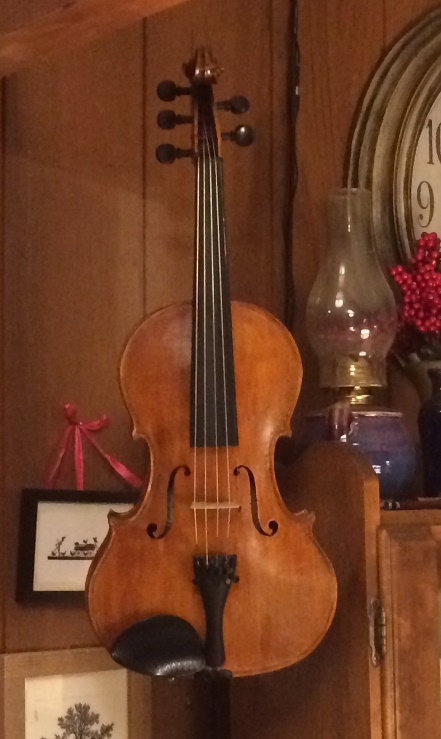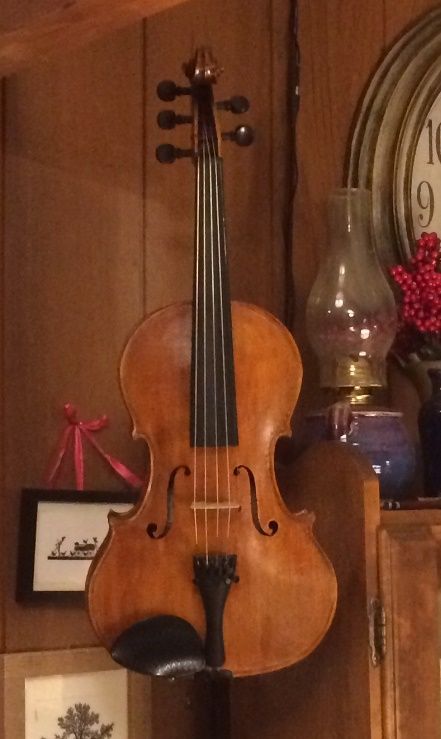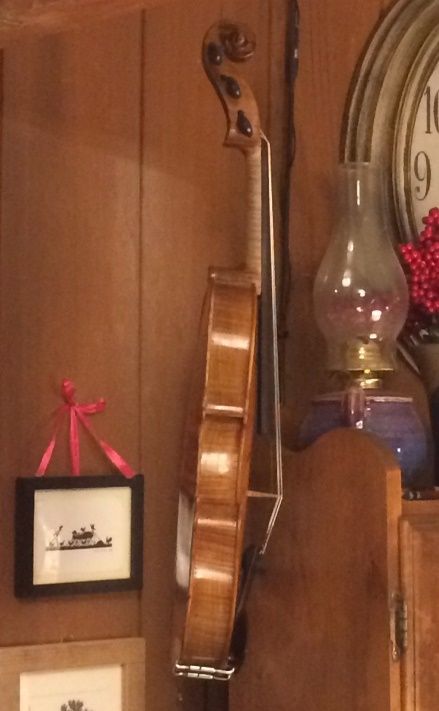, years ago,
What can be done on a 5-string Viola that cannot be done on a classical viola?
J. S. Bach Cello Suite #6
I recently spoke with a pro-level violist from California. He said that you cannot play the Bach Cello Suite #6 in the original key on a four-string viola! (This presented a new idea to me. I am not really a player, so I simply never had thought of that possibilty.) Accordingly, I looked it up online:
I offer the following quote from an article in “The Strad” Magazine. The Magazine quotes Simon Rowland-Jones’ comments in 1999. (The article appeared in July, 2021)
“The suite can only comfortably be played on a five-string instrument, although most cellists do play it on a normal four-string cello using thumb position to facilitate the higher registers. As thumb position is not possible on the viola, violists normally play this suite in the key of G.”
I knew that J. S. Bach actually wrote suite #6 for a five-string cello (possibly a violoncello piccolo.) Experienced cellists play it, but they find it challenging on a four-string classical cello. I just had never thought that “very difficult” for a classical cellist might spell “impossible” for a classical violist!
So, a five-string viola actually provides the only answer for a violist who really wants to play all six Bach cello suites on a viola, in the original keys!
Violin/Viola Teachers love the 5-string Viola for a different reason:
Violin teachers find the 5-string viola offers a big help, too. Especially when teaching in a group setting, the five string instrument allows the teacher to demonstrate the violin part for the violin section. The teacher can immediately switch to the violists’ part, without having to change instruments. A well-balanced five-string instrument provides good sound on both ends of the spectrum.
Band Members love them, too
Players in modern bands ( Jazz, Country, Bluegrass, or anything between) enjoy being able to drop into a growly low harmony to complement whatever melody the lead singer or instrument is following. When the five-string instrument is the lead, the player will really shine, because of the extended range.
Large Violas vs. Small Violas
I do not claim that there is no difference between the sound of a large instrument and a small one. (Sorry: a well-made, well-set-up, large viola simply does provide a bigger voice.) However, a well-made, properly set-up, small 5-string viola can still demonstrate an amazingly good voice. It will speak easily on the C-string, and be very open, deep and clear. It will prove to be just as clear and strong on all five strings. But violists really like the sound of big violas!
Non-Classical, Ergonomic Options
So: what can I do for a player who, by reason of physical limitations, cannot play a large viola? David Rivinus invented a new form, years ago. He named the new instrument “Pellegrina.”
The Pellegrina I tried out offered the playing length of a 15″ viola, but it possessed the internal space of an 18″ viola! (How is that possible? Well, quite honestly, I thought it looked as though Salvador Dali must have designed it!) Mr. Rivinus had dramatically extended the curves of both the upper bass bout and the lower treble bout, so that they “bulged diagonally.”
This feature provides the internal resonance volume of an 18″ viola. But he left the playing length from neck-heel to end-button exactly that of a 15″ viola. The player’s hand moved no further from her shoulder than it would have done with a 15″ instrument.
Commission only, for Ergonomic, non-classical forms
If a player wants such an instrument, today, I can build one. However, I will only build it as a commission. Also, I will be using my own design, not a copy of David Rivinus’s work. (Mr. Rivinus retired a few years ago, and quit building them. His personal instruments are no longer available except when a player sells one. In fact, he still functions as a broker for those selling or buying his older creations.)
But Mr. Rivinus built the Pellegrina using sound engineering principles: His instruments (or instruments like his) offer a very good option for ergonomics. However, some players feel so strongly the need to “Look Normal” that they will never try such an option. (That is sad, because many violists end up with injuries by playing violas which are really just too large for them. )
Five String Violas for sale:
If you are interested in a five-string viola of any kind, please contact me, and we will discuss your needs. If you need something similar to what Mr. Rivinus invented, we can talk, as well, but it would definitely be a commissioned instrument.
Additionally, if a player wants anything far out of the ordinary, it will be offered on a commission basis.
Thanks for looking.





